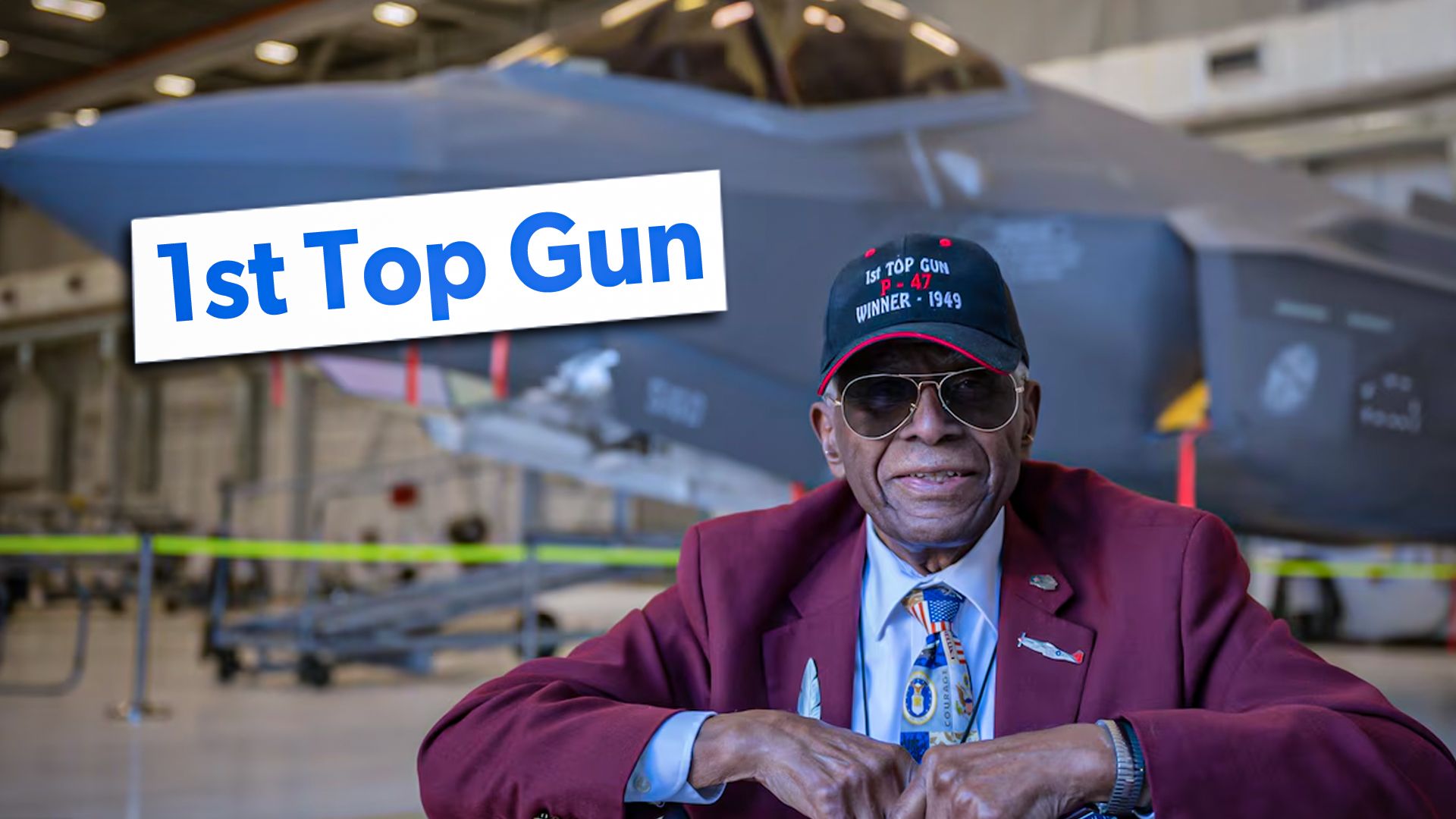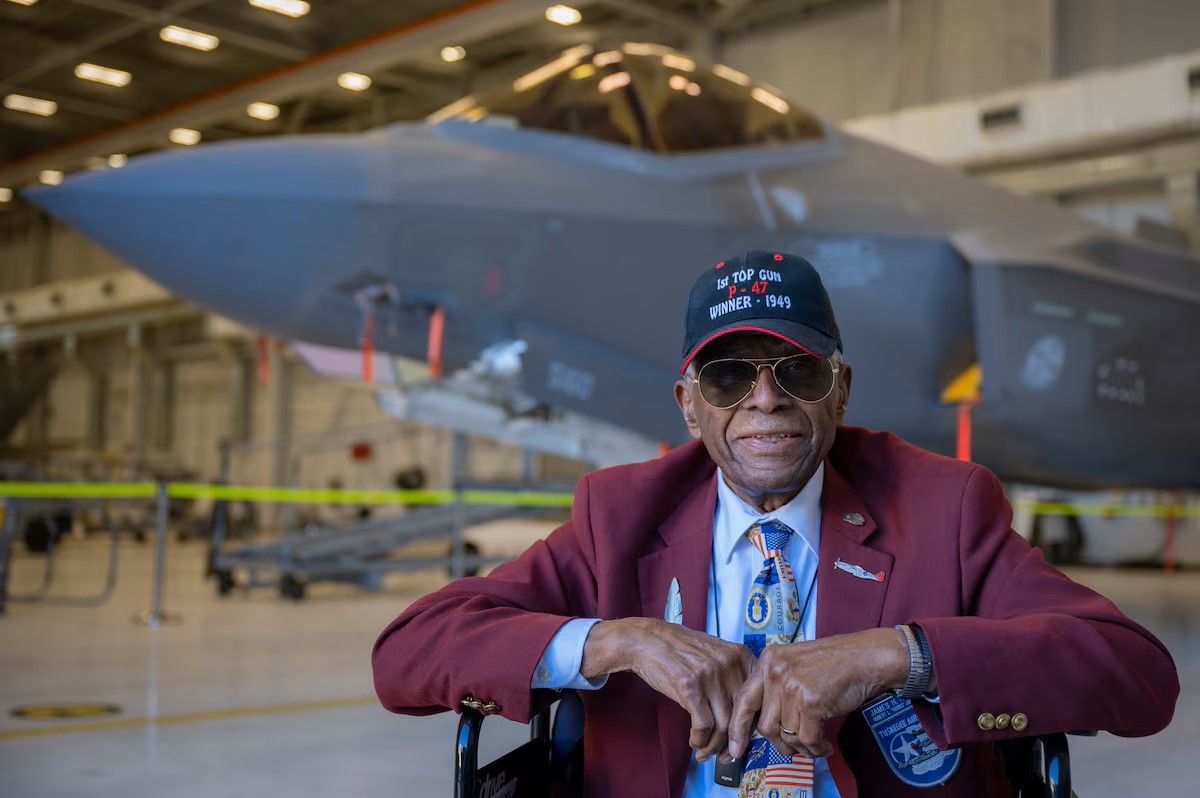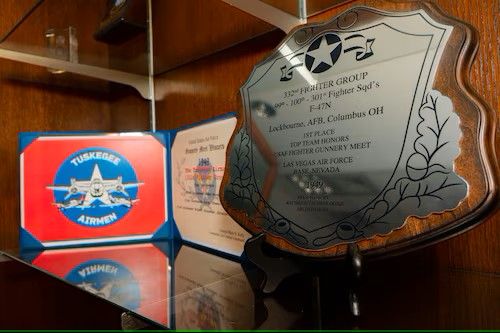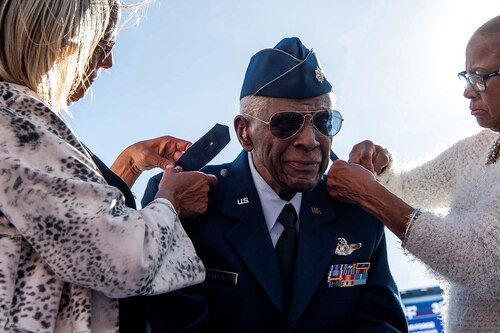Quick Links
Many military aviation buffs are familiar with Top Gun, both the fictitious film franchise and the real-life Navy fighter pilot training school. Likewise, several military aviation buffs are familiar with the story of the Tuskegee Airmen, the heroic African American fighter pilots of WWII who broke racial barriers within the US Armed Forces in addition to breaking ground and blasting Nazi German Luftwaffe fighter planes out of the sky by the bushel basket.
What not so many people realize is that (1) the first Top Gun school was a US Air Force venture rather than a US Navy one, and (2) the first Top Gun winner was a Tuskegee Airman. Simple Flying now proudly presents to you the inspiring story of Lieutenant Colonel (USAF, Ret.) James H. Harvey III.
James H. Harvey III early life and initial military career
James Henry Harvey III was born on July 13, 1923, in Montclair, New Jersey, and was the eldest of the four children (brother Charles and sisters Dorothy and Cornelia) of James Jr. and Cornelia Harvey. When James was 13 years of age, the Harvey family relocated to Nuangola Station in Northeastern Pennsylvania, where they were the sole African American family in the area. Young James attended high school in Mountain Top, Pennsylvania, where he excelled as a student, serving as President of his senior class, anchor on the tumbling team, captain of the basketball team, and class valedictorian.
I haven’t been able to ascertain where Lt. Col. Harvey attended college.
James first attempted to enlist with the United States Army Air Forces (USAAF) in January 1943; however, he was turned down because of his race. He was instead drafted into the United States Army that April and, as luck would have it, was initially assigned to the USAAF as an engineer.
Embodying the spirit of “persistence and consistency,” he applied for the Aviation Cadet Training Program, took the Cadet Training Exam at Bolling Field (known nowadays as Joint Base Anacostia-Bolling), and was admitted to the Tuskegee Flight School’s Aviation Cadet Training Program. He attended Basic Training in Biloxi, Mississippi, for thirty days, then transferred to Tuskegee Army Air Field to begin pilot training.
On October 16, 1944, Harvey graduated from the Tuskegee Flight Program Army Air as a member of Class 44–4, rightfully earning both his pilot’s wings and a commission as 2nd Lieutenant flying officer.
The United States Army Air Corps assigned Harvey to the 99th Fighter Squadron in Godman Field, Kentucky. However, Harvey and his squadron did not engage in combat during World War II.
Making history in the Korean War
Y’know, folks, even if it weren’t for the Top Gun nexus, Lt. Col. Harvey’s story would be a remarkable and historically significant one.
You see, during the Korean War, Mr. Harvey became the first African American jet fighter pilot to fly in combat. He was awarded the Distinguished Flying Cross (DFC) for leading a four-ship formation of Lockheed F-80 Shooting Stars amid bad weather conditions during a bomber support mission on October 16, 1950, near Yongsan, Korea (now the Yongsan District in Seoul, South Korea), inflicting heavy damage on an enemy encampment. Harvey flew 140 sorties in the deadly skies over Korea and was awarded several Air Medals.
First Top Gun winner
Ah, so then, now we move on to the crux of our story. As noted by the Tuskegee Top Gun website:
“Likewise, after the 1986 Hollywood release ‘Top Gun,’ there has been a wide misconception that this country’s first Top Gun Program was developed by the Navy in the 1980’s, competing in F-14 Tomcats. Again, not the case. In fact, the military’s first ‘Top Gun’ gunnery meet originated decades before and was established by the newly formed Unites [sic] States Air Force.”
“What is also virtually unknown, is that Tuskegee Airmen, Captain Alva Temple, 1st Lieutenant Harry Stewart, 1st Lieutenant James H Harvey III and alternate pilot Halbert Alexander, competing in their P-47N Thunderbolts, would go on to win the USAF very ‘First Top Gun” Weapons Meet (also known as ‘William Tell’ and ‘Gunsmoke’) in May of 1949, at what would later become Nellis AFB.”
“Accolades go to our Maintenance Personnel, because without them the missions could not have been flown with success. They were the Best in the USAF. A special thank you is extended to my aircraft crew chief (then Staff Sergeant) Buford Johnson.”
What makes their achievement even more remarkable is that they were pitting their P-47 “Flying Bathtubs” against newer and sleeker P-51 Mustangs and F-82 Twin Mustangs. However, proper recognition for then-1st Lt Havey, 1st Lt Stewart, 1st Lt Alexander, and Capt. Temple, was delayed for far too long. Let James tell you the story in his own words (“straight from the horse’s mouth,” metaphorically speaking, of course):
That overdue recognition was finally conferred upon Lt. Col. Harvey on January 11, 2022, whereupon Gen. Mark Kelly, commander of Air Combat Command (ACC), presided over the unveiling of a plaque commissioned to reaffirm and properly publicize the accomplishments of the 332nd Fighter Group’s win. In Gen. Kelly’s words (as quoted by Airman 1st Class [A1C; pay grade E-3] Zachary Rufus of 57th Wing Public Affairs):
“We stand on the shoulders of giants in this profession, and Lt. Col. Harvey is one of those giants.”
A pleasing postscript
The longtime snub of James H. Harvey III’s proper recognition notwithstanding, all’s well that ends well. Though his official retirement rank for pension cheque purposes remains Lieutenant Colonel (AKA “light colonel;” pay grade O-5), on November 4, 2023, he received an honorary promotion to “full-bird Colonel (pay grade O-6) in a deeply moving ceremony that took place Denver’s Empower Field during halftime of the football game between the US Air Force Academy (USAFA) Fighting Falcons and the US Military Academy (AKA West Point, or for collegiate athletic semantic purposes, just plain “Army”) Black Knights.
As Colorado Senator Michael Bennet aptly stated (as quoted in a news story by the USAFA Strategic Communications office):
“‘Lieutenant Colonel James H. Harvey III led a distinguished career as a 22-year Army veteran and member of the renowned Tuskegee Airmen. Having served in a military that was still segregated, he faced no shortage of obstacles, but his incredible courage, skill, and perseverance led him to earn repeated honors, including as the military’s first [African American] fighter jet pilot to fly in Korean airspace and the winner of the military’s original “Top Gun” competition.’”
Honorary Col. Harvey’s metallic silver eagle rank insignia was pinned upon the shoulders of his service dress (USAF equivalent of the US Army “Class A” uniform) by daughters, Alysyn Green and Kathy Harvey, and his niece Karen Jackson.
Bravo Zulu, Col. Jackson, HOOAH, and thank you, and God bless you for your service! Go Air Force, Beat Army, Beat Navy!!!




